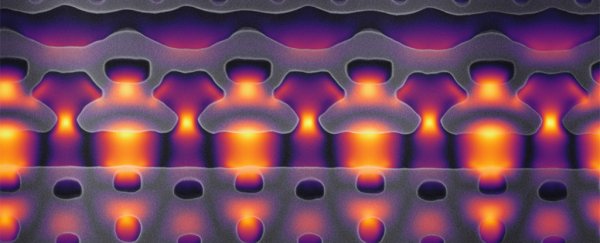Particle accelerators like the Large Hadron Collider (LHC) are incredibly useful – and usually incredibly huge – instruments for studying some of the fundamentals of particle physics. But now scientists have managed to squeeze one on to a silicon chip.
It's nowhere near as powerful as the bigger versions, as you might expect, but the new particle accelerator chip could still be very helpful for researchers who aren't able to access gigantic particle accelerator setups.
While this first model is only a prototype, the team behind it is hopeful that it's a first step towards providing a more compact alternative to the well-known massive particle accelerators, including the LHC and the SLAC National Accelerator Laboratory.
"The largest accelerators are like powerful telescopes," says electrical engineer Jelena Vuckovic, from Stanford University. "There are only a few in the world and scientists must come to places like SLAC to use them."
"We want to miniaturise accelerator technology in a way that makes it a more accessible research tool."
To achieve this, the researchers turned to the much shorter wavelengths of lasers rather than the conventional microwave acceleration used at SLAC.
They carved a nanoscale channel out of silicon – less than the width of a human hair – sealed it in a vacuum, and then propelled electrons through it using pulses of infrared light (silicon appears transparent to infrared light beams).
The researchers used what they describe as an 'inverse' approach to designing the particle accelerator, first figuring out how much light energy they wanted to deliver, and then working backwards to create nanoscale structures capable of delivering it.
While laser acceleration has been tried before, this is the first time that scientists have been able to get an entire accelerator system built in so small a space, in part due to the computer algorithms that helped in the design of the setup.
 (Sapra et al/Science)
(Sapra et al/Science)
"You not only have to demonstrate the ability to couple the laser light to the electrons in these very small structures, but you have to generate the electrons and have them also be transmitted by the channel," physicist Robert Byer, from Stanford University, told Sophie Bushwick at Scientific American.
The good news is that this should lead to cheaper and easier access to the technology for researchers, who can then apply it in a variety of scenarios covering chemistry, biology and materials science. Those behind the study have likened it to the home PC replacing mainframe computers that used to take up entire rooms.
The research has been published in Science.
